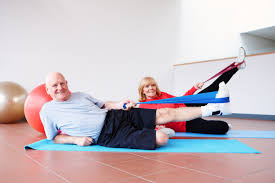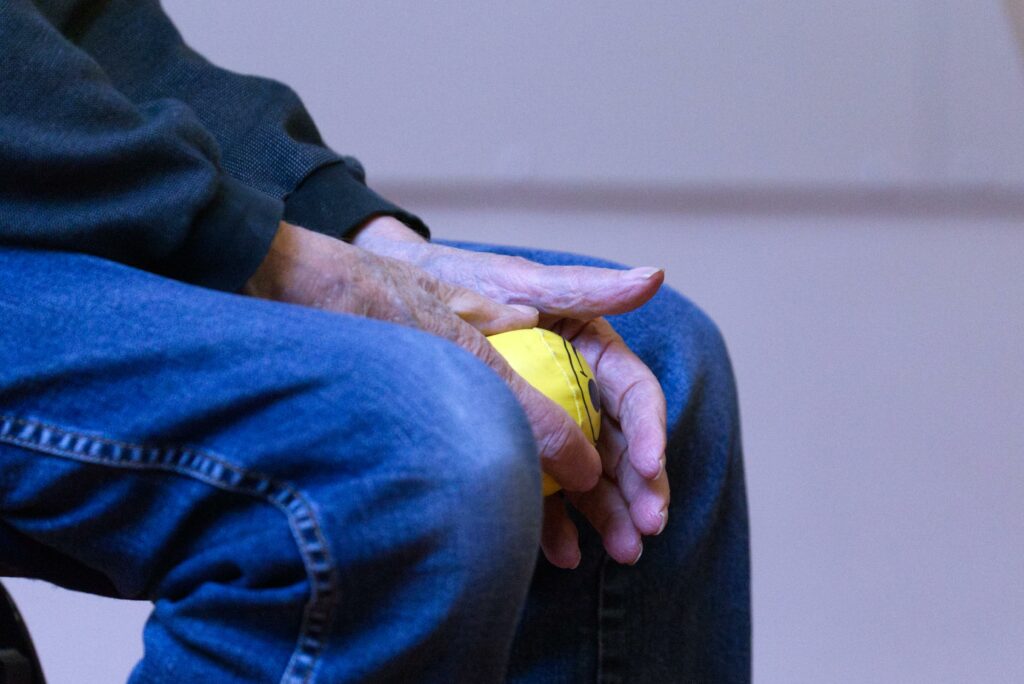Rheumatoid arthritis (RA) is a chronic inflammatory disorder that primarily affects the joints, causing pain, swelling, and stiffness. While medication is crucial in managing the condition, exercise plays an equally important role in alleviating pain and improving overall quality of life for those with RA. Contrary to common misconceptions, physical activity, when done correctly, can help reduce inflammation and improve joint function. In this article, we will explore how exercise can ease rheumatoid arthritis pain, the types of exercises that are most beneficial, and tips for incorporating physical activity into your routine.
Why Exercise Is Beneficial for Rheumatoid Arthritis

Exercise might seem counterintuitive for those experiencing joint pain, but it offers numerous benefits for people with RA. When done correctly, physical activity can:
- Reduce Joint Pain and Stiffness: Regular movement helps to lubricate the joints, reducing stiffness and pain. Exercise also strengthens the muscles around the joints, providing them with better support.
- Improve Flexibility and Range of Motion: Stretching and gentle exercises help to maintain and even improve joint flexibility, making daily activities easier and less painful.
- Reduce Fatigue: Rheumatoid arthritis often brings fatigue, making it harder to stay active. Ironically, regular exercise can boost energy levels and reduce feelings of tiredness.
- Enhance Mental Health: Exercise is known to release endorphins, which improve mood and reduce stress. Managing RA can be emotionally draining, but physical activity can serve as a valuable tool for mental well-being.
- Strengthen Muscles: Weak muscles can contribute to joint instability. By strengthening the muscles around affected joints, exercise helps to alleviate some of the strain, reducing overall pain.
- Maintain a Healthy Weight: Excess weight can put additional pressure on already compromised joints, especially in the hips, knees, and ankles. Regular exercise helps manage weight, which in turn can decrease pain in weight-bearing joints.
Types of Exercises for Rheumatoid Arthritis
Not all exercises are suitable for individuals with RA, as some may exacerbate joint pain and inflammation. It’s important to choose low-impact exercises that are gentle on the joints while still being effective. Here are some of the best types of exercise for people with RA:

- Stretching Exercises: Stretching helps maintain joint flexibility and improves the range of motion, which can become restricted with RA. Gentle stretches should focus on the affected joints to help keep them mobile and reduce stiffness. A simple stretching routine can be performed daily, especially in the morning when joints are often the stiffest.
- Strength Training
Building muscle strength is crucial for supporting and stabilizing the joints. Weight training, using resistance bands, or body-weight exercises like squats or lunges can strengthen muscles without putting too much pressure on the joints. It’s important to use proper form and consult with a physical therapist or trainer to avoid injury. - Low-Impact Aerobic Exercise
Aerobic exercise helps improve cardiovascular health, boosts energy levels, and helps manage weight. Low-impact options such as walking, swimming, and cycling are excellent choices. Swimming, in particular, is a highly recommended activity for those with RA, as the water supports the body, reducing stress on the joints while allowing for full movement. - Yoga and Pilates
These practices focus on balance, flexibility, and muscle strength. Yoga, especially when modified for arthritis, includes gentle poses that stretch and strengthen muscles while encouraging relaxation and deep breathing. Pilates helps strengthen the core and improve overall body alignment, which is beneficial for joint stability. - Tai Chi
Tai Chi is a low-impact exercise that involves slow, deliberate movements and deep breathing. This ancient Chinese practice has been shown to improve balance, flexibility, and strength while reducing pain and stress. Tai Chi’s gentle movements make it an excellent option for people with RA. - Range of Motion Exercises
These exercises specifically target the joints, helping to improve flexibility and movement. Simple activities like gently bending and extending the joints, rotating the wrists or ankles, or even squeezing a soft ball can help keep the joints mobile.
Tips for Exercising with Rheumatoid Arthritis
While exercise can be incredibly beneficial for managing RA, it’s important to approach physical activity with caution and mindfulness. Here are some essential tips for exercising safely and effectively with RA:

- Consult Your Doctor or Physical Therapist
Before starting any exercise program, it’s important to consult with a healthcare professional, especially if you’re new to exercising or if your RA symptoms are severe. A physical therapist can design a customized exercise plan based on your specific needs and limitations. - Start Slowly
If you’re new to exercise or experiencing a flare-up, start with short, low-intensity workouts. Gradually increase the duration and intensity as your body adapts. Pushing too hard, too soon can lead to injury or exacerbate symptoms. - Listen to Your Body
While some muscle soreness is normal when starting a new exercise routine, joint pain is not. If you experience pain in your joints during or after exercise, stop the activity and consult your doctor. Modify exercises as needed to accommodate your pain levels. - Focus on Low-Impact Activities
Avoid high-impact exercises like running or jumping, which can place too much strain on your joints. Instead, stick to low-impact activities like swimming, walking, and cycling that minimize joint stress. - Warm Up and Cool Down
Always warm up before exercising to get your muscles and joints ready for movement. A proper warm-up increases blood flow to the muscles and can reduce stiffness. Similarly, a cool-down after exercise helps prevent muscle soreness and maintains flexibility. - Exercise During Remission
If you’re experiencing a flare-up, it’s best to rest the affected joints and focus on gentle movements like stretching or water-based exercises. During periods of remission, you can engage in more challenging activities to build strength and flexibility. - Use Proper Equipment
Wearing supportive shoes, using appropriate weights, and utilizing equipment like resistance bands can help you exercise safely and prevent injury. If you swim, water shoes can provide extra support and traction in the pool. - Incorporate Rest Days
Your body needs time to recover, especially if you’re managing a chronic condition like RA. Incorporating rest days into your routine allows your joints and muscles to heal, reducing the risk of overuse injuries.
Conclusion
Exercise can be a powerful tool in managing rheumatoid arthritis, offering a natural and effective way to reduce pain, improve joint function, and enhance overall well-being. The key is to choose low-impact, joint-friendly activities that focus on flexibility, strength, and cardiovascular health. By incorporating exercise into your daily routine and working with healthcare professionals to design a tailored plan, you can alleviate the symptoms of RA and live a more active, fulfilling life.
Remember, consistency is key. Even on difficult days, gentle movements can help ease discomfort and improve mood. With patience, dedication, and the right approach, exercise can make a significant difference in managing rheumatoid arthritis.



